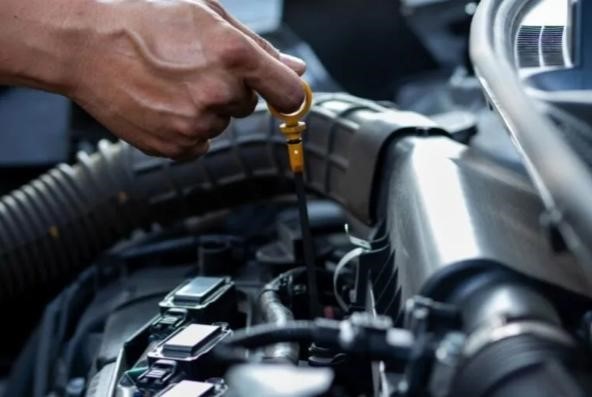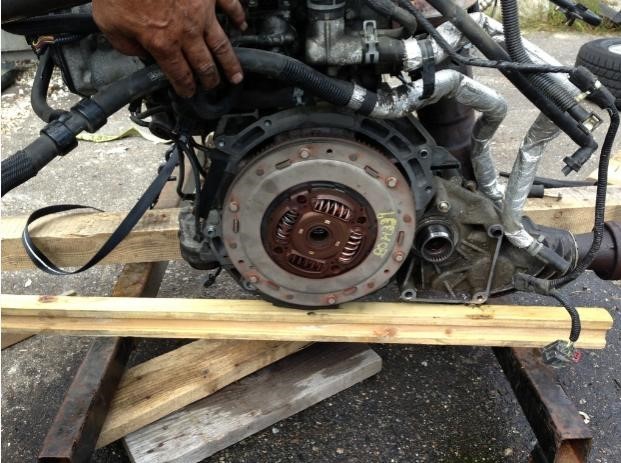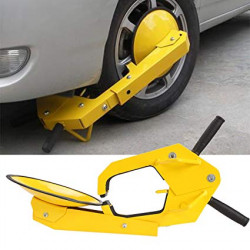How To Detect Transmission Fault In Ford Escape.
Your Ford escape automatic transmission system needs close attention so that a fault can be detected easily. In simple terms, a transmission system is a gearbox that provides speed and power to your car. A transmission fault can cost a lot of money to repair, in some cases it can be a minor repair while in other cases it becomes a major repair. Major transmission repairs can sometimes cost more than repairing your car's engine.
Ford Escape is prone to transmission faults once it reaches 70,000 to 80,000 miles. And although Ford escape is prone to transmission faults, there are some specific years to avoid. The 2005, 2006, 2008, and 2013 Ford escape have been given the label of the worst “Ford escape years.” It will cost up to $5,000 to repair severe damages caused by transmission faults. In this guide, we will explain the symptom of transmission failure and how to detect them, this way, you can get your car fixed on time to avoid serious repairs.
How to detect transmission fault in ford escape
Here are some symptoms of a transmission fault that you should not dismiss. Ignoring these warning signs can lead to serious damage to your car system.
1. Transmission fluid leak
The transmission system of Ford escape is automatic hence it uses an automatic transmission fluid. Fluids are important to lubricate the transmission system, they also help in cooling. A transmission leak is the most common cause of transmission fault and it can be caused by a wrong installation of the transmission pan or a leaking transmission pan. To detect a leak, check your driveway for stains of fluid or take a short drive while tracking your trail for a fluid leak. To find a leak, you can also check the level of the transmission fluid in your Ford escape. To do this, take your car for a quick drive to warm up the transmission fluid, and after the drive, park your car and open the hood. Take out the transmission dipstick and wipe it with a clean rag, insert the dipstick back and pull it out.
The fluid level should be in the “HOT” marks, and if you don’t take a drive or your car is cold, the fluid level should be in the “COOL” mark.

2. A burnt smell
If there is a leak, you may notice a burning smell, and of course, a burning smell is never good. When this happens, check your transmission for a leak and fix it right away. If your transmission fluid is, it causes a burning smell and when the transmission fluids overheat and burn out, there is no lubrication and this causes friction. Friction between car parts causes transmission breakdown by damage and debris build-up.
3. Strange noises when the car is in neutral
Strange noises coming from under your car are probably a minor case of transmission fault that indicates a major problem for your car. This whining, clunking, or humming noise can be caused by the breakdown of the ATF (Automatic Transmission Fluid) or it can be caused by a fault in the internal part of the transmission. Although strange noises can also indicate a problem with the engine, for this reason, a transmission inspection is necessary to determine where the problem lies.
4. Problem with the solenoid
The solenoid is a car component responsible for starting your car and controlling the uplifting and downshifting while you drive. When transmission fault occurs, the car solenoid damages and shows signs of a strange shifting pattern and possibly a failed shifting.
5. Engine light
The engine light can indicate a problem in different parts of your car, but it is a warning you shouldn’t ignore. The engine light can be found on the dashboard as a red light or as a blinking light, although this indicator points out minor and major problems, it is best to check with your transmission system to ensure that it is in great condition. A ford escape engine system has multiple sensors that can detect a transmission fault swiftly. When these problems are detected, a signal is being sent to your screen on the dashboard and this signal is known as the engine light.
6. Gears slipping
Gear slipping is a minor symptom of a transmission fault that can get worse if not fixed. When your gear slips, you hear your engine revving whenever you change gears. This can be caused by worn-out gear, a low fluid level, or problems with the clutch. Other signs of a gear slip include;
• A warning from the engine light
• A burnt smell
• Hindered acceleration
• Trouble shifting gears and if you successfully change gears, there is a violent response.
• Unusual slipping sounds when changing gears
These signs are also associated with transmission fault and can be seen before or after your gear begins to slip.
7. Grinding and shaking
Your Ford escape automatic transmission usually changes gears easily. But when there is a transmission fault, you can hear an odd vibration in your Ford escape when you accelerate beyond 35MPH or get a strange grinding sensation, this is a problem that should not be overlooked by car owners. Grinding and slipping is common to Ford escape 2013, and it can be caused by issues with the gear system. Grinding in Ford escape can be caused by failed needle bearing. Needle bearings are small rollers that keep the gears in an automatic transmission running without grinding. So when these needle roller bearings fail, you are left with grinding gears.
8. Clutch pedal/linkage issues
This is a transmission problem common to most Ford escape. When there is a problem with the hydraulic system of your car, you can experience an abrupt halt in your clutch system. In some cases, the pedal drops to the ground and is unable to disengage, in other cases the clutch pedal is too high. A high clutch pedal can be a result of a transmission fault or a worn clutch disc, while a low or dragging clutch is a problem associated with the clutch master cylinder being unable to deliver the force needed to release pressure due to leakage or air in the system.

9. Poor response
Another transmission problem common to Ford escape car owners is that there is a poor response when you attempt to switch from park to drive and vice versa. In a situation where the problem is severe, there is no response at all and this can leave you stuck for a while.
Strange noises
Apart from the whining noises, your Ford escape makes when in neutral, there is also a humming sound that can be audible air dull. This sound is your cue to inspect your transmission system and make repairs before the situation gets worse.
Simple causes of transmission faults
Sometimes, the reason for transmission fault doesn’t have to be complex, little mistakes often cost you a lot when it comes to cars. Here are some causes of transmission fault in your Ford escape.
1. Inaccurate dipstick
2. Wrong installation of the automatic transmission
3. Poor throttle valve adjustment
4. Avoid servicing your transmission regularly.
You are requested see this video for repairing process of Transmission faults.
Conclusion
Your Ford escape automatic transmission system needs close attention so that a fault can be detected easily. In simple terms, a transmission system is a gearbox that provides speed and power to your car. A transmission fault can cost a lot of money to repair, in some cases it can be a minor repair while in other cases it becomes a major repair. Major transmission repairs can sometimes cost more than repairing your car's engine.
Ford Escape is prone to transmission faults once it reaches 70,000 to 80,000 miles. And although Ford escape is prone to transmission faults, there are some specific years to avoid. The 2005, 2006, 2008, and 2013 Ford escape have been given the label of the worst “Ford escape years.” It will cost up to $5,000 to repair severe damages caused by transmission faults. In this guide, we will explain the symptom of transmission failure and how to detect them, this way, you can get your car fixed on time to avoid serious repairs.
How to detect transmission fault in ford escape
Here are some symptoms of a transmission fault that you should not dismiss. Ignoring these warning signs can lead to serious damage to your car system.
1. Transmission fluid leak
The transmission system of Ford escape is automatic hence it uses an automatic transmission fluid. Fluids are important to lubricate the transmission system, they also help in cooling. A transmission leak is the most common cause of transmission fault and it can be caused by a wrong installation of the transmission pan or a leaking transmission pan. To detect a leak, check your driveway for stains of fluid or take a short drive while tracking your trail for a fluid leak. To find a leak, you can also check the level of the transmission fluid in your Ford escape. To do this, take your car for a quick drive to warm up the transmission fluid, and after the drive, park your car and open the hood. Take out the transmission dipstick and wipe it with a clean rag, insert the dipstick back and pull it out.
The fluid level should be in the “HOT” marks, and if you don’t take a drive or your car is cold, the fluid level should be in the “COOL” mark.

2. A burnt smell
If there is a leak, you may notice a burning smell, and of course, a burning smell is never good. When this happens, check your transmission for a leak and fix it right away. If your transmission fluid is, it causes a burning smell and when the transmission fluids overheat and burn out, there is no lubrication and this causes friction. Friction between car parts causes transmission breakdown by damage and debris build-up.
3. Strange noises when the car is in neutral
Strange noises coming from under your car are probably a minor case of transmission fault that indicates a major problem for your car. This whining, clunking, or humming noise can be caused by the breakdown of the ATF (Automatic Transmission Fluid) or it can be caused by a fault in the internal part of the transmission. Although strange noises can also indicate a problem with the engine, for this reason, a transmission inspection is necessary to determine where the problem lies.
4. Problem with the solenoid
The solenoid is a car component responsible for starting your car and controlling the uplifting and downshifting while you drive. When transmission fault occurs, the car solenoid damages and shows signs of a strange shifting pattern and possibly a failed shifting.
5. Engine light
The engine light can indicate a problem in different parts of your car, but it is a warning you shouldn’t ignore. The engine light can be found on the dashboard as a red light or as a blinking light, although this indicator points out minor and major problems, it is best to check with your transmission system to ensure that it is in great condition. A ford escape engine system has multiple sensors that can detect a transmission fault swiftly. When these problems are detected, a signal is being sent to your screen on the dashboard and this signal is known as the engine light.
6. Gears slipping
Gear slipping is a minor symptom of a transmission fault that can get worse if not fixed. When your gear slips, you hear your engine revving whenever you change gears. This can be caused by worn-out gear, a low fluid level, or problems with the clutch. Other signs of a gear slip include;
• A warning from the engine light
• A burnt smell
• Hindered acceleration
• Trouble shifting gears and if you successfully change gears, there is a violent response.
• Unusual slipping sounds when changing gears
These signs are also associated with transmission fault and can be seen before or after your gear begins to slip.
7. Grinding and shaking
Your Ford escape automatic transmission usually changes gears easily. But when there is a transmission fault, you can hear an odd vibration in your Ford escape when you accelerate beyond 35MPH or get a strange grinding sensation, this is a problem that should not be overlooked by car owners. Grinding and slipping is common to Ford escape 2013, and it can be caused by issues with the gear system. Grinding in Ford escape can be caused by failed needle bearing. Needle bearings are small rollers that keep the gears in an automatic transmission running without grinding. So when these needle roller bearings fail, you are left with grinding gears.
8. Clutch pedal/linkage issues
This is a transmission problem common to most Ford escape. When there is a problem with the hydraulic system of your car, you can experience an abrupt halt in your clutch system. In some cases, the pedal drops to the ground and is unable to disengage, in other cases the clutch pedal is too high. A high clutch pedal can be a result of a transmission fault or a worn clutch disc, while a low or dragging clutch is a problem associated with the clutch master cylinder being unable to deliver the force needed to release pressure due to leakage or air in the system.

9. Poor response
Another transmission problem common to Ford escape car owners is that there is a poor response when you attempt to switch from park to drive and vice versa. In a situation where the problem is severe, there is no response at all and this can leave you stuck for a while.
Strange noises
Apart from the whining noises, your Ford escape makes when in neutral, there is also a humming sound that can be audible air dull. This sound is your cue to inspect your transmission system and make repairs before the situation gets worse.
Simple causes of transmission faults
Sometimes, the reason for transmission fault doesn’t have to be complex, little mistakes often cost you a lot when it comes to cars. Here are some causes of transmission fault in your Ford escape.
1. Inaccurate dipstick
2. Wrong installation of the automatic transmission
3. Poor throttle valve adjustment
4. Avoid servicing your transmission regularly.
You are requested see this video for repairing process of Transmission faults.





